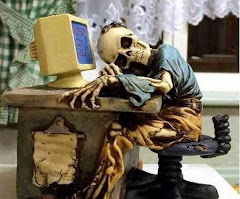We had Trev from STAR Eucation come and give us a hands on session with some assistive technology. It was great fun and he even managed to follow the instructions we made up on a recording device to make a smoothie!!
Assistive Technology refers to services, strategies, devices and practices that are used to assist individuals with impairments overcome their difficulties.
Cook, A.M., & Hussey, S.M. (2000). Assistive technologies: Principles and practice. Sydney: Mosby.
Another example is "Any item, piece of equipment, or product system, whether acquired commercially off the shelf, modified or customised, that is used to increase, maintain or improve functional capabilities of individuals with disabilities".
Isabelle, S., Bessey, S.F., Dragas, K.L., Blease, P., Shepherd, J.T. & Lane, S.J. (2002). Assistive technology for children with disabilities. Occupational Therapy in Health Care, 16(4), 29-51.
After looking at lots of items such as simple recording devices with Yes or No on them, alarm clocks that vibrate for visually impaired or flash for the deaf, computers with learning software and switching devices I chose a simple piece of equipment called the 'All Turn It Spinner' to review.
This item is a box approximately 30cm square and 10cm deep and has two sets of pictures of dice showing numbers from one to six. Pushing the switch activates the spinner and the top set of dice turn with the bottom set remaining fixed. The numbers can then be added together as they are in a usual board game where there are two dice. The pictures are easily removable (the top one simply lifting off and the bottom one is below a piece of glass that is simple to remove by an adult and the spinner lifts off to remove the bottom piece of paper) and could be replaced. An example could be photos of familiar items to assist with language skills of teaching names.
This piece of equipment can increase functional capacity in a number of ways. Simple switching devices that can be used by the severly impaired can increase the opportunity to engage in play in their home and at school. Whilst the student might not be able to participate in the board game being played, they could act as the designated dice "thrower". This in turn has been found to develop "self confidence, problem solving skills and independant thinking " (Isabelle et. al, 2002, p. 39).
Using the switch takes some motor control. In a small child this piece of equipment could be useful to commence with prior to moving on to using switches on the computer and maybe then on to using a mouse for learning opportunities.
As mentioned above the pictures can be changed to build up a larger vocabulary. They could push the spinner and then be asked to name the item it lands on.
Whilst this is a simple piece of equipment, the different options I have listed above shows how with problem solving you can use it in a variety of ways to promote 'Participation in Occupation'.
When I am a practising OT, knowing there are people out there like Trev that are experts at adapting simple equipment will be invaluable to assist with problem solving to meet my client's needs.
Subscribe to:
Post Comments (Atom)



No comments:
Post a Comment